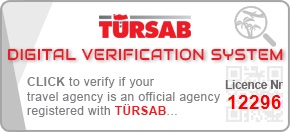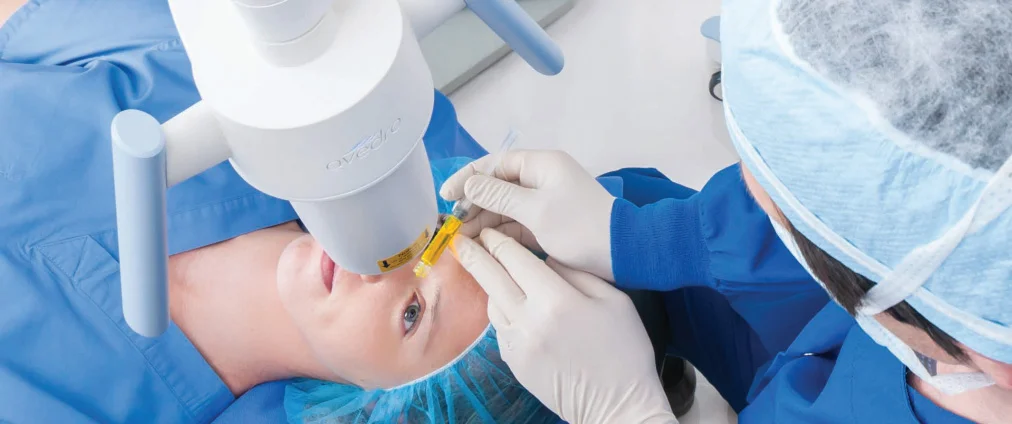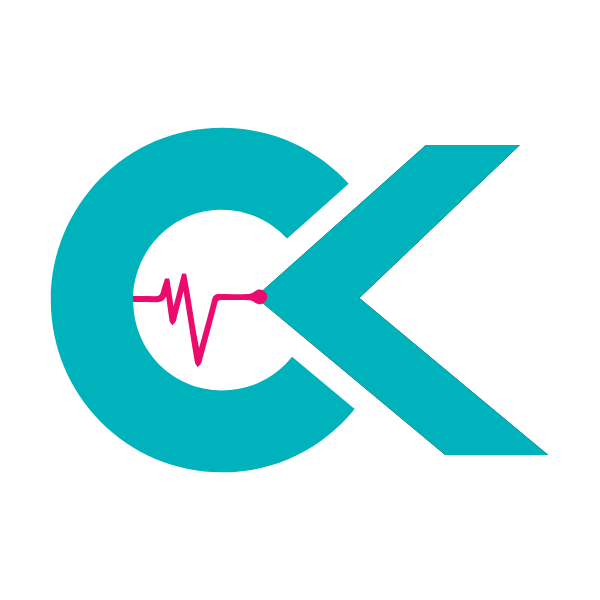The pursuit of optimal ocular health often leads individuals to explore advanced medical interventions. For those diagnosed with keratoconus, a progressive eye condition that causes the cornea to thin and bulge into a cone-like shape, corneal cross-linking (CXL) stands as a pivotal treatment. This innovative procedure is designed to strengthen the corneal tissue, thereby halting the progression of the disease and preserving vision. As medical advancements continue to evolve, so too does the global landscape of healthcare, with an increasing number of patients from the United Kingdom and beyond considering destinations like Turkey for specialized treatments due to their high standards of care and economic advantages. This comprehensive guide delves into the intricacies of CXL, comparing the treatment landscape between Turkey and the United Kingdom, and highlighting why Turkey has emerged as a preferred choice for international patients seeking this sight-saving intervention.
Table of Contents
Understanding Corneal Cross-Linking (CXL)
Corneal cross-linking represents a significant breakthrough in ophthalmology, offering a robust solution for a condition that once led inevitably to severe vision impairment and often necessitated corneal transplantation. The procedure leverages biochemical principles to reinforce the structural integrity of the cornea, which is vital for clear vision.
What is Keratoconus?
Keratoconus is an ectatic corneal disease characterized by progressive thinning and steepening of the cornea. This irregular shape causes light rays entering the eye to be refracted unevenly, leading to distorted vision, glare, and sensitivity to light. Initially, symptoms may be subtle, such as mild blurring and increased astigmatism. However, as the condition advances, vision can deteriorate significantly, impacting daily activities and quality of life. The exact cause of keratoconus is not fully understood, but it is believed to be a combination of genetic predisposition and environmental factors, including chronic eye rubbing.
The Science Behind CXL: Collagen Cross-Linking
The fundamental principle behind collagen cross linking is the creation of new bonds between collagen fibers within the cornea. The cornea’s strength largely depends on the intricate network of these collagen fibers. In keratoconus, these fibers weaken and lose their structural rigidity. CXL addresses this by using a combination of riboflavin (vitamin B2) solution and ultraviolet A (UVA) light. Riboflavin acts as a photosensitizer, absorbing the UVA light and releasing reactive oxygen species. These species then induce the formation of new chemical bonds (cross-links) between the collagen fibrils. This process effectively stiffens the cornea, making it more resistant to the outward bulging characteristic of keratoconus. This cross linking of cornea prevents further deformation, thereby stabilizing vision.
Who is a Candidate for CXL?
Patient selection is crucial for the success of corneal cross-linking. Ideal candidates typically present with progressive keratoconus or other forms of corneal ectasia (e.g., post-LASIK ectasia) that are actively worsening. Key criteria include:
- Evidence of progressive keratoconus, documented by changes in corneal topography and pachymetry over time.
- Sufficient corneal thickness (generally above 400 microns) to prevent damage to underlying structures during the UVA irradiation.
- Age considerations: CXL is commonly performed in adolescents and young adults where progression is most aggressive, but can be effective for older patients if progression is confirmed.
- Absence of severe corneal scarring or active infection.
- Realistic expectations regarding the procedure’s ability to stabilize rather than necessarily improve vision significantly.
The CXL Procedure: What to Expect
Undergoing corneal cross-linking is a well-established procedure, typically performed on an outpatient basis. Patients are often apprehensive about eye surgery, but understanding each step can alleviate concerns and foster confidence in the process.
Pre-Procedure Evaluation
Before CXL, a thorough ophthalmic examination is conducted. This includes:
- Comprehensive Eye Exam: Assessment of overall eye health, visual acuity, and refractive error.
- Corneal Topography and Tomography: Detailed mapping of the corneal surface and thickness, essential for diagnosing and monitoring keratoconus progression.
- Pachymetry: Measurement of corneal thickness to ensure suitability for the procedure.
- Pupil Dilation: To examine the retina and optic nerve.
- Discussion of Medical History: Including any medications, allergies, or pre-existing conditions.
Patients are typically advised to stop wearing contact lenses for a specified period before evaluation and the procedure itself to allow the cornea to return to its natural shape.
The Cross-Linking Process: Epi-Off vs. Epi-On
There are two primary approaches to corneal cross-linking, each with distinct methodologies:
1. Epi-Off CXL (Standard Protocol):
- The most common and clinically validated method.
- Procedure: The superficial layer of the cornea (epithelium) is gently removed. This allows the riboflavin solution to penetrate more deeply and effectively into the corneal stroma.
- Riboflavin Application: Riboflavin drops are applied to the exposed cornea for approximately 30 minutes to saturate the tissue.
- UVA Irradiation: The eye is then exposed to controlled UVA light for about 30 minutes, activating the riboflavin and initiating the cross-linking process.
- Bandage Contact Lens: A therapeutic contact lens is placed on the eye to aid healing and reduce discomfort during the initial recovery phase.
2. Epi-On CXL (Transepithelial CXL):
- This newer technique aims to preserve the corneal epithelium.
- Procedure: The epithelium remains intact, and specialized riboflavin formulations are used that are designed to penetrate the epithelial barrier.
- Riboflavin Application: Riboflavin drops are applied for a longer duration compared to epi-off CXL.
- UVA Irradiation: UVA light is applied in a similar fashion.
- Potential Benefits: Reduced discomfort post-procedure, faster visual recovery, and lower risk of infection due to the intact epithelial barrier.
- Considerations: Penetration of riboflavin can be less consistent, potentially leading to less robust cross-linking compared to the epi-off method. Its long-term efficacy is still under evaluation compared to the established epi-off protocol.
The choice between epi-off and epi-on CXL is made by the surgeon based on the individual patient’s corneal characteristics and the surgeon’s clinical judgment.
Post-Procedure Care and Recovery
Following corneal cross-linking, patients can expect a structured recovery period. Strict adherence to post-operative instructions is vital for optimal outcomes:
- Medication: Patients will be prescribed antibiotic and anti-inflammatory eye drops to prevent infection and manage inflammation. These should be used exactly as directed.
- Discomfort Management: Some discomfort, light sensitivity, and tearing are common in the first few days, especially with epi-off CXL. Pain relievers can be used as needed.
- Protective Eyewear: Wearing sunglasses outdoors is recommended to protect the sensitive eye from UV light and reduce glare.
- Activity Restrictions: Strenuous activities, swimming, and eye rubbing should be avoided for several weeks to prevent complications and allow for proper healing.
- Follow-up Appointments: Regular follow-up visits with the ophthalmologist are crucial to monitor healing, assess visual acuity, and track corneal changes.
Visual recovery can vary. While some improvement may be noticed within weeks, the full stabilization and potential visual improvement may take several months to a year as the cornea remodels.
Efficacy and Long-Term Outcomes
The primary goal of corneal cross-linking is to halt the progression of keratoconus. Extensive research has validated its effectiveness in achieving this critical objective. A comprehensive meta-analysis evaluating the efficacy of corneal collagen cross-linking (CXL) for progressive keratoconus consistently demonstrates its ability to significantly halt disease progression. Studies reviewed across multiple randomized controlled trials reported a stabilization or improvement in maximum keratometry (Kmax) readings in over 90% of treated eyes within 12-24 months post-procedure. Furthermore, a significant improvement in uncorrected and corrected distance visual acuity was noted in a substantial portion of patients, underscoring CXL’s role not only in preventing further vision loss but also in enhancing existing visual function for many individuals.
Halting Progression and Improving Vision
For the vast majority of patients, CXL successfully stabilizes the cornea, preventing further steepening and thinning. This stabilization is paramount in preventing the need for future corneal transplantation. While CXL primarily aims to stop progression, many patients also experience a modest improvement in their visual acuity, often due to a slight flattening of the cornea. This can lead to better spectacle or contact lens correction and an enhanced quality of life. The long-term effects of collagen cross linking have been studied for over a decade, showing sustained stability in most patients, which solidifies its position as a highly effective treatment for keratoconus.
Potential Risks and Complications
While CXL is generally safe, as with any medical procedure, there are potential risks and complications, albeit rare. These include:
- Corneal Haze: Temporary cloudiness of the cornea, usually resolving over time.
- Infection: A rare but serious complication, minimized by strict sterile techniques and post-operative antibiotics.
- Delayed Epithelial Healing: More common with epi-off CXL, which can prolong discomfort and recovery.
- Sterile Corneal Infiltrates: Inflammatory reactions that typically respond to topical steroids.
- Epithelial Abrasions: During the epi-off procedure.
- Vision Fluctuations: Temporary changes in vision during the healing period.
Patients are thoroughly informed of these potential risks during the consultation process, ensuring they can make an educated decision about their treatment.
Corneal Cross-Linking in Turkey vs. the United Kingdom
The decision to undergo corneal cross-linking often involves considering various factors beyond the procedure itself, including cost, quality of care, and accessibility. For patients in the United Kingdom, comparing options domestically with those available through medical tourism destinations like Turkey reveals significant differences.
Cost Comparison: Turkey Offers Significant Value
One of the most compelling reasons for patients from the UK to seek CXL treatment in Turkey is the substantial cost savings. Healthcare costs in the United Kingdom, particularly for specialized elective procedures not fully covered by the NHS or requiring private care, can be prohibitive. Turkey, on the other hand, provides world-class medical services at a fraction of the price, without compromising on quality.
| Service/Item | Turkey Price (GBP) | United Kingdom Price (GBP) |
|---|---|---|
| Standard CXL (per eye) | £1,200 – £1,800 | £2,800 – £4,500 |
| Accelerated CXL (per eye) | £1,500 – £2,200 | £3,200 – £5,000 |
| Consultation & Diagnostics | £150 – £250 | £300 – £600 |
*Prices are estimates and can vary based on clinic, surgeon, and specific patient needs.*
These figures clearly illustrate the economic advantage of choosing Turkey for corneal cross-linking. The lower operational costs, favorable exchange rates, and government support for medical tourism contribute to these competitive prices, making high-quality eye care accessible to a broader international audience.
Quality of Care and Advanced Facilities
Concerns about quality often accompany discussions of medical tourism. However, Turkey’s medical sector has invested heavily in modern infrastructure, cutting-edge technology, and highly skilled medical professionals. Many clinics and hospitals in Turkey are internationally accredited, adhering to rigorous global standards. Surgeons specializing in ophthalmology are often Western-trained or have extensive experience with international patient cohorts. They utilize the latest CXL techniques and equipment, ensuring outcomes comparable to, or even exceeding, those found in many Western countries.
Accessibility and Patient Experience
Turkey boasts excellent accessibility from the UK, with frequent direct flights to major cities like Istanbul, Ankara, and Antalya. The patient experience in Turkey is also a key differentiator. Clinics catering to international patients often provide comprehensive packages that include airport transfers, accommodation assistance, and dedicated patient coordinators who facilitate communication and logistics. This holistic approach significantly eases the medical travel journey, making it a comfortable and stress-free experience for patients and their accompanying family members. Patients can expect personalized care, shorter waiting times, and a focus on hospitality that enhances their overall medical journey.
Why Choose CK Health Turkey for Your CXL Procedure
Choosing the right partner for your medical journey is paramount, especially when it concerns delicate procedures like corneal cross-linking. CK Health Turkey stands as a leading facilitator for international patients, offering unparalleled service, expertise, and support for a wide range of medical treatments. Our commitment to excellence ensures that every patient receives the highest standard of care, from initial consultation to post-operative follow-up.
At CK Health Turkey, we partner with top-tier ophthalmology clinics and highly experienced surgeons who specialize in advanced eye care. Our network of accredited facilities is equipped with state-of-the-art technology to perform corneal cross-linking with precision and optimal outcomes. We understand that undertaking medical treatment abroad can be daunting, which is why we meticulously manage every aspect of your trip. From detailed treatment plans and transparent pricing to accommodation and local transportation, our dedicated team ensures a seamless and comfortable experience. We believe in empowering our patients with knowledge and support, guiding them through every step of their journey.
Our expertise extends beyond CXL, encompassing a full spectrum of eye care solutions, including advanced vision correction procedures. For instance, you can learn more about ReLEx SMILE: Procedure, Recovery, and Cost Insights in Turkey or gain a deeper understanding of Vision Correction: Understanding LASIK Surgery Cost, should you be exploring other options. We pride ourselves on our transparent processes and patient-centric approach. To understand our operational philosophy and the steps we take to ensure patient satisfaction, we invite you to explore How Do We Work. Our goal is to provide peace of mind, allowing you to focus solely on your recovery and well-being. For a consultation or to learn more about how CK Health Turkey can facilitate your corneal cross-linking treatment, please get in touch with our patient coordination team or visit our website to explore our comprehensive services.
FAQs
What is the success rate of corneal cross-linking?
Corneal cross-linking has a high success rate, typically over 90%, in halting the progression of keratoconus. While it primarily aims to stabilize the cornea, many patients also experience a modest improvement in visual acuity.
Is corneal cross-linking painful?
During the procedure, your eye will be numbed with anesthetic drops, so you should not feel any pain. After the procedure, particularly with the epi-off technique, you may experience some discomfort, foreign body sensation, light sensitivity, and tearing for a few days. Pain medication can manage this effectively.
How long does the CXL procedure take?
The actual procedure, including riboflavin application and UVA exposure, typically takes about an hour per eye. However, including preparation and recovery time at the clinic, you should expect to be there for several hours.
What is the recovery time for CXL?
Initial recovery, especially for epi-off CXL, usually involves 3-5 days of discomfort while the epithelium heals. Visual recovery can be gradual, with stable vision often achieved within 3-6 months, and full effects continuing to develop for up to a year.
Can I drive after corneal cross-linking?
No, you will not be able to drive immediately after the procedure due to blurred vision and eye drops. It is advisable to arrange for transportation home and to avoid driving for at least a few days, or until your ophthalmologist confirms it is safe.
Are there any long-term side effects or complications?
Most side effects are temporary, such as corneal haze which usually resolves. Rare complications include infection or persistent haze, which are managed with appropriate medical treatment. Long-term studies have shown CXL to be a safe and durable treatment for keratoconus.
Can CXL be performed on both eyes at the same time?
Typically, CXL is performed on one eye at a time to allow for recovery and monitoring, minimizing potential impact on daily activities. If both eyes require treatment, the second eye is usually treated a few weeks or months later.
Is CXL covered by insurance in the UK?
Coverage for CXL in the UK can vary. While some private insurance providers may cover it, NHS coverage often depends on the severity of the keratoconus and whether it is rapidly progressing. Many patients opt for private treatment due to waiting lists or limited coverage, making international options like Turkey more appealing.



